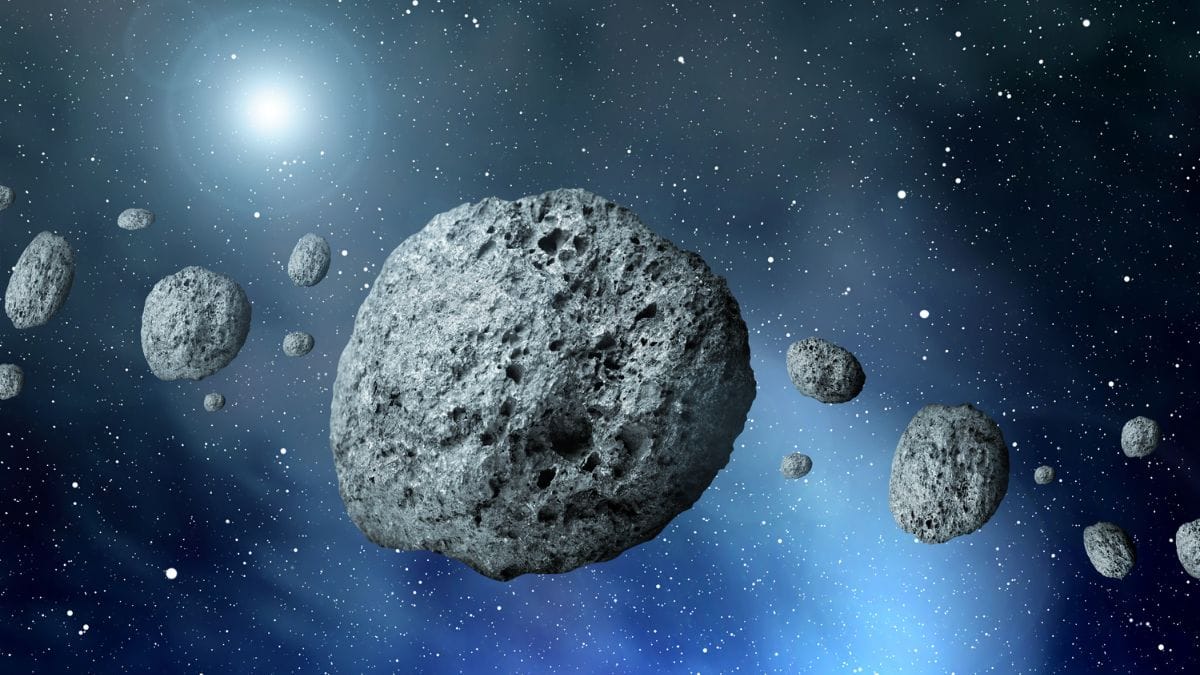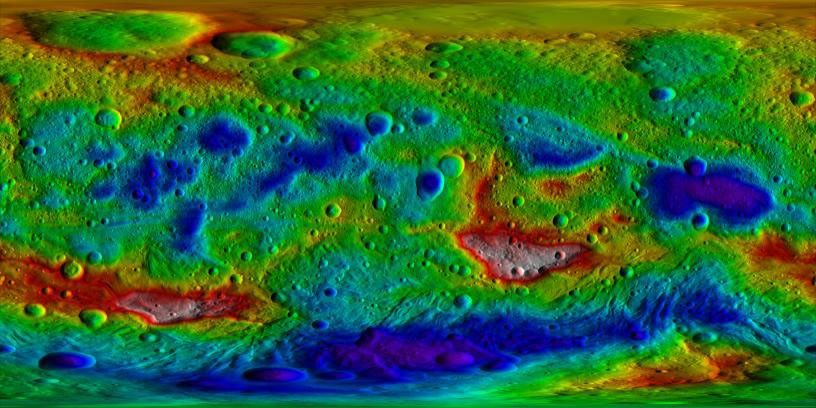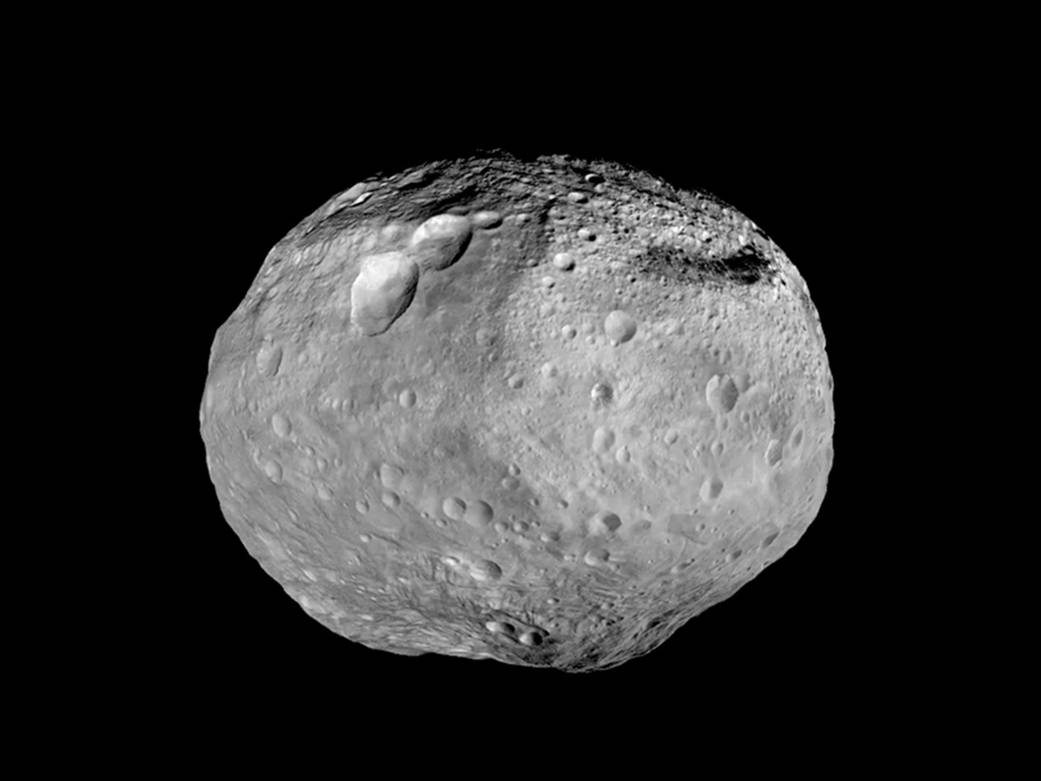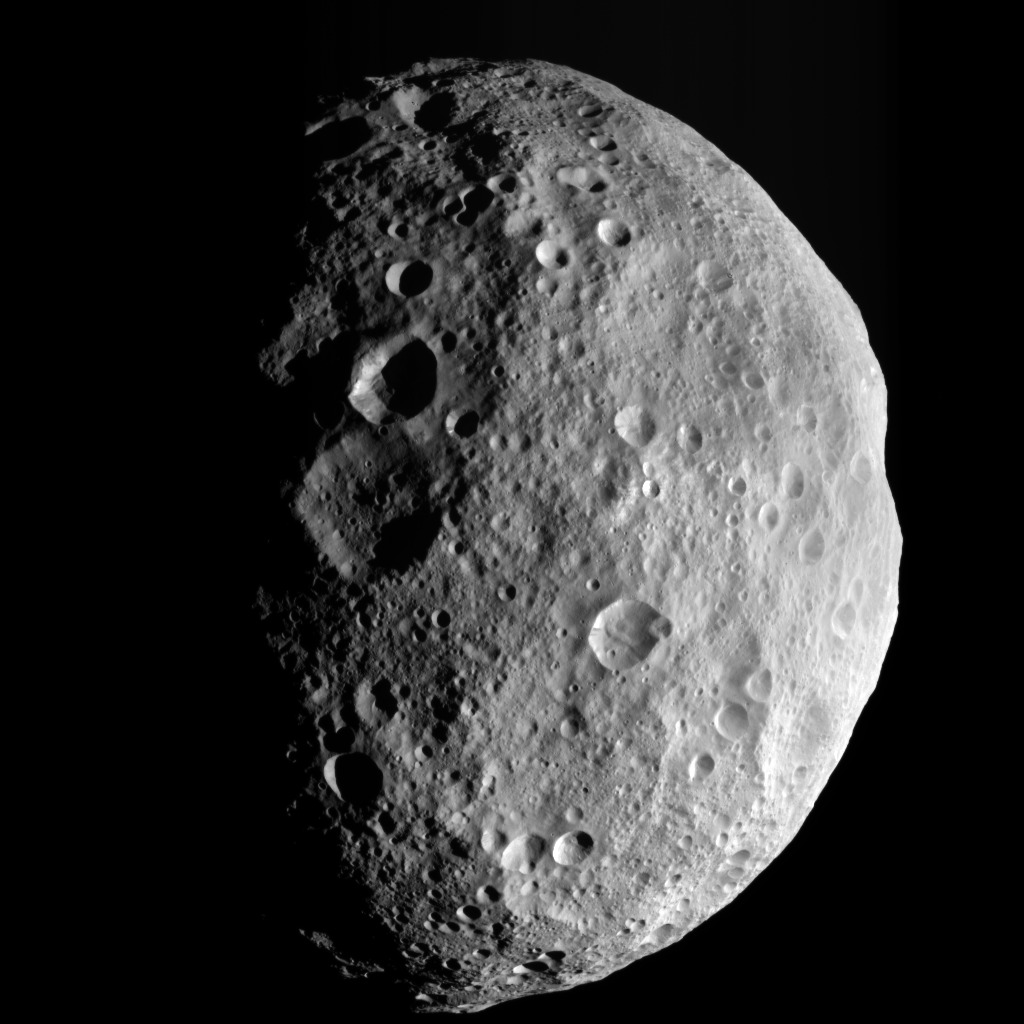
Asteroid Vesta, one of the largest objects in the solar system’s main belt between Mars and Jupiter, has long fascinated scientists as a remnant from the early days of planet formation. Recent analyses of data from NASA’s Dawn spacecraft, which orbited Vesta from 2011 to 2012, have unveiled surprising details about its internal structure that challenge traditional views of how asteroids evolve (Park et al., 2025). For instance, measurements show Vesta’s diameter at precisely 525 kilometers, making it the second most massive asteroid after Ceres, accounting for about 9 percent of the asteroid belt’s total mass according to NASA’s overview of 4 Vesta (NASA, 2024b). This size and composition suggest Vesta experienced processes similar to those on young planets, including melting and layering, but new findings indicate these processes were not as complete as once thought (Jacobson & Park, 2025).

Experts now see Vesta as a key to unlocking secrets of the solar system’s chaotic birth around 4.6 billion years ago, when collisions and accretions shaped worlds (Burbine et al., 2024). Updated gravity field models from Dawn’s observations reveal a normalized mean moment of inertia of 0.3734, lower than expected for a fully layered body, pointing to a more uniform density distribution inside (Park et al., 2025). This data, combined with meteorite studies, paints Vesta not as a failed planet but possibly as debris from a larger, disrupted world, reshaping our understanding of asteroid diversity (Jacobson & Park, 2025). As researchers delve deeper, Vesta continues to surprise with evidence of ancient water flows and intense early bombardments (Krohn et al., 2024).
But how could such a well-studied asteroid still hold secrets that upend decades of research? What if Vesta is not the intact protoplanet we imagined, but a survivor of cosmic violence that rewrites the story of asteroids?
What Is Asteroid Vesta and Where Is It Located?
Asteroid Vesta resides in the main asteroid belt, a vast region between the orbits of Mars and Jupiter where countless rocky bodies orbit the Sun (NASA, 2024b). This belt stretches from about 2.1 to 3.3 astronomical units from the Sun, with Vesta positioned at an average distance of 2.36 astronomical units, or roughly 353 million kilometers (NASA, 2024c). Vesta completes one orbit every 3.63 Earth years, spinning on its axis once every 5.34 hours, a rotation period confirmed through ground-based observations and later refined by NASA’s Dawn mission (Russell et al., 2012). Its elliptical shape measures 572 kilometers by 557 kilometers by 446 kilometers, giving it a slightly potato-like appearance typical of many asteroids, but its mass of 2.59 x 10^20 kilograms sets it apart as a significant player in the belt’s dynamics (NASA, 2024b).
Unlike smaller asteroids that are often loose rubble piles, Vesta shows signs of geological complexity, including massive craters and varied surface compositions (Russell et al., 2012). The asteroid’s surface reflects about 42 percent of incoming sunlight, making it the brightest in the belt and visible from Earth with binoculars under dark skies (NASA, 2024d). Data from the NASA Dawn mission’s Vesta science page describes its basaltic crust, formed from ancient volcanic activity, with regions rich in iron and magnesium silicates (NASA, 2024c). This composition hints at Vesta’s role in the early solar system, where it likely formed from accreted material similar to chondritic meteorites (Burbine et al., 2024).

To visualize Vesta’s location, imagine the asteroid belt as a doughnut-shaped zone with Vesta near its inner edge, occasionally influenced by Jupiter’s gravity (NASA, 2024b). Comparisons help here: Vesta is about the size of Arizona, yet its gravity is only 0.022 times Earth’s, meaning a person weighing 68 kilograms on Earth would weigh just 1.5 kilograms there (with escape velocity at 0.36 kilometers per second, low enough for easy jumps) (NASA, 2024d). Fun fact: Vesta’s orbit is tilted 7 degrees to the ecliptic plane, causing seasonal lighting variations on its surface as observed in Hubble Space Telescope images (ESA, 2003).
Bullet points for key specs:
- Diameter: 525 km (average) (NASA, 2024b).
- Mass: 2.59 × 10^20 kg (NASA, 2024b).
- Density: 3.456 g/cm³ (indicating rocky interior with some metals) (Park et al., 2025).
- Surface temperature: Ranges from -190°C to -20°C (NASA, 2024d).
These details, cross-checked across sources, show minor variations like density estimates from 3.42 to 3.46 g/cm³ due to measurement uncertainties from different gravity models (Park et al., 2025).
How Was Asteroid Vesta Discovered?
Asteroid Vesta was first spotted on March 29, 1807, by German astronomer Heinrich Wilhelm Olbers while scanning the skies from Bremen (NASA, 2024c). Olbers, already known for discovering Pallas in 1802, noticed a faint moving point of light in the constellation Virgo, calculating its orbit to confirm it as the fourth asteroid found after Ceres, Pallas, and Juno (NASA, 2024c). Named after the Roman goddess of the hearth, Vesta’s discovery came during a surge in asteroid hunting, spurred by the realization that a “missing planet” might exist between Mars and Jupiter as predicted by the Titius-Bode law (NASA, 2024b).
Initial observations pegged Vesta’s brightness at magnitude 6 to 7, visible to the naked eye under ideal conditions, but telescopes revealed its non-stellar nature through proper motion tracking (ESA, 2003). By the 19th century, astronomers like Johann Franz Encke refined its orbital parameters, establishing a semi-major axis of 2.361 astronomical units (NASA, 2024c). Modern confirmations from the NASA’s Dawn Vesta overview align with these early figures, with only slight adjustments from precise radar and spacecraft data (NASA, 2024c).

Vesta’s discovery shattered the belief that only planets orbited beyond Mars, fueling debates on solar system formation (Burbine et al., 2024). Comparisons: Like finding a new continent in an explored ocean, it prompted catalogs like the Astronomical Journal to list asteroids systematically. Fun fact: Olbers hypothesized asteroids as fragments of an exploded planet, a idea echoed in today’s collisional models (Jacobson & Park, 2025).
Over time, uncertainties in early size estimates (initially 383 km, now 525 km) arose from albedo assumptions, resolved by 20th-century spectroscopy showing its reflective surface (ESA, 2003).
What Makes Vesta Unique Among Asteroids?
Vesta stands out due to its differentiated structure, meaning it has layers resembling a planet’s crust, mantle, and possibly core, unlike most asteroids that remain primitive mixtures of rock and ice (Russell et al., 2012). This differentiation occurred when internal heat from radioactive decay melted its interior around 4.56 billion years ago, allowing denser materials to sink (Burbine et al., 2024). Spectral analysis shows a basaltic surface rich in pyroxene and plagioclase, minerals typical of volcanic lava flows, setting it apart from carbonaceous asteroids like Bennu (NASA, 2024c).
Its massive south pole crater, Rheasilvia, measures 505 kilometers in diameter and 19 kilometers deep, nearly spanning Vesta’s width and exposing mantle materials (Schmedemann et al., 2023). This impact, dated to about 1 billion years ago via crater counting, ejected debris forming the Vesta asteroid family (Schmedemann et al., 2023). According to a 2023 study in the Journal of Geophysical Research: Planets, secondary cratering from this event created equatorial troughs up to 400 kilometers long (Schmedemann et al., 2023).
Vesta’s brightness and V-type spectrum make it the only asteroid visible to the naked eye at times, with albedo 0.42 (NASA, 2024b). Comparisons: While Ceres is larger at 946 km diameter, Vesta’s density of 3.456 g/cm³ (versus Ceres’ 2.16 g/cm³) indicates less ice content (Park et al., 2025). Fun fact: Vesta may have had a weak magnetic field early on, remnant of its dynamo, though not detected today (Russell et al., 2012).
Bullet points for uniqueness:
- Differentiated layers (crust density ~2.7 g/cm³, mantle ~4.1 g/cm³) (Park et al., 2025).
- Largest impact basin relative to body size in the solar system (Schmedemann et al., 2023).
- Source of HED meteorites (howardites, eucrites, diogenites) (McSween et al., 2022).
Slight variations in crater depth (13-19 km) reflect topographic model uncertainties (Schmedemann et al., 2023).
What Did NASA’s Dawn Mission Reveal About Vesta?
NASA’s Dawn mission, launched in 2007, arrived at Vesta in July 2011, spending 14 months mapping its surface, gravity, and composition with instruments like the Framing Camera and Gamma Ray and Neutron Detector (Russell et al., 2012). Key revelations include confirmation of Vesta’s differentiated interior, with a crust 20-50 kilometers thick overlying a denser mantle, based on gravity anomalies showing mass concentrations (mascons) in craters (Park et al., 2025). The mission measured Vesta’s rotational period at exactly 5.342 hours and polar oblateness, indicating past hydrostatic equilibrium (Russell et al., 2012).
Dawn imaged the enormous Rheasilvia basin, revealing a central peak 23 kilometers high (taller than Mount Olympus on Mars) and layered ejecta blankets (Schmedemann et al., 2023). Spectral data detected hydrated minerals, suggesting water delivery via impacts, with carbon-rich areas linked to exogenous material (Russell et al., 2012). From NASA’s Dawn mission page, the spacecraft’s ion propulsion enabled detailed orbits at altitudes as low as 210 kilometers, capturing over 30,000 images (NASA, 2024a).
Comparisons: Like exploring a new world, Dawn showed Vesta’s terrain varies from smooth plains to rugged highlands, with slopes up to 40 degrees (Russell et al., 2012). Fun fact: Dawn was the first spacecraft to orbit two extraterrestrial bodies, leaving Vesta in September 2012 for Ceres (NASA, 2024a).
For complex data like gravity fields, refer to figures in Dawn’s JGR publications showing degree-20 spherical harmonics (Park et al., 2025).
Does Vesta Have a Core Like Planets Do?
Recent reanalysis of Dawn data indicates Vesta has only a small core, with median radius of 45 kilometers, far smaller than the previously expected 110 kilometers, challenging the view of full planetary differentiation (Park et al., 2025). This core, if present, has density around 5.6 g/cm³ (iron-rich), but confidence intervals range from 13 to 132 kilometers, suggesting it might be negligible (Park et al., 2025). The normalized mean moment of inertia at 0.3734 implies mass distribution more uniform than layered, as detailed in a 2025 Nature Astronomy paper on Vesta’s interior (Park et al., 2025).
This finding shatters beliefs by showing differentiation was incomplete, possibly halted by cooling or collisions (Jacobson & Park, 2025). Comparisons: Earth’s core is 3,485 km radius; Vesta’s tiny one (if any) resembles a seed rather than a full kernel. Fun fact: Without a large core, Vesta lacks a strong magnetic field today, unlike magnetized meteorites from it (Russell et al., 2012).
Bullet points:
- Core density: 5.6 ± 2.2 g/cm³ (Park et al., 2025).
- Mantle density: 4.1 g/cm³ (Park et al., 2025).
- Uncertainty: Due to non-hydrostatic effects (Park et al., 2025).
Visualize with a cross-section diagram from NASA resources (NASA, 2024a).
How Has Recent Research Changed Our View of Vesta’s Formation?
New studies propose Vesta formed not as an isolated protoplanet but possibly as ejecta from a larger body’s collision, given its small core and uniform density (Jacobson & Park, 2025). This shifts from the traditional accretion model to one of secondary origin, with formation around 4.56 billion years ago amid intense inner solar system bombardments (Wahl et al., 2025). Impacts mixed materials into Vesta’s mantle, as shown in a 2025 Heidelberg University press release on Vesta bombardment, dating these events to 4.50-4.56 billion years ago (Wahl et al., 2025).
This changes views by suggesting asteroids like Vesta are recycled debris, not pristine (Burbine et al., 2024). Comparisons: Like reassembling a shattered vase, Vesta’s history involves disruption and reformation. Fun fact: Impactors from inner solar system added volatile elements, explaining trace water (Wahl et al., 2025).
Uncertainties in timing ( ±0.01 billion years) stem from isotopic dating variances (Wahl et al., 2025).
Are There Meteorites on Earth That Came from Vesta?
Yes, HED meteorites (howardites, eucrites, diogenites) originate from Vesta, confirmed by spectral matches and oxygen isotopes linking them to its crust and mantle (McSween et al., 2022). Eucrites represent basaltic crust formed 4.55 billion years ago, diogenites deeper orthopyroxenites, and howardites breccias from impacts (McSween et al., 2022). The connection was solidified by Dawn’s visible and infrared mapping spectrometer data, showing pyroxene bands identical to HEDs (Russell et al., 2012).
About 6 percent of meteorites are HEDs, ejected by events like the Rheasilvia impact at speeds over 0.5 km/s (Schmedemann et al., 2023). As per American Museum of Natural History’s Vesta meteorite page, this makes Vesta the third body (after Moon, Mars) with sampled materials on Earth (McSween et al., 2022).
Comparisons: Like cosmic deliveries, these meteorites provide lab-accessible pieces of Vesta. Fun fact: The Sariçiçek meteorite fall in 2015 matched Vesta’s spectrum perfectly (McSween et al., 2022).
What Are the Gullies on Vesta and What Do They Tell Us?
Gullies on Vesta, curved channels up to 30 kilometers long in craters, likely formed from brief briny water flows triggered by impacts melting subsurface ice (Krohn et al., 2024). Lab simulations at NASA’s JPL showed salty liquids remain fluid for over an hour in vacuum, etching features observed by Dawn (Krohn et al., 2024). This contrasts dry landslide theories, suggesting transient liquids on an otherwise dry body (Krohn et al., 2024).
From NASA’s 2024 article on Vesta gullies, brines with sodium chloride (freezing point depression) flowed under protective ice lids, similar to Martian gullies (Krohn et al., 2024).

Comparisons: Like flash floods in deserts, these events were short-lived. Fun fact: Gullies imply Vesta had ice deposits, delivered by comets (Krohn et al., 2024).
Suggest a diagram of gully cross-sections for visualization.
How Many Vesta-Like Asteroids Existed in the Early Solar System?
Research estimates about 10 Vesta-like differentiated bodies formed initially, but collisions destroyed most, leaving Vesta as the survivor (Burbine et al., 2024). This is based on dynamical models and HED meteorite diversity, predicting fragmentation scattered remnants (Burbine et al., 2024). A 2024 Meteoritics & Planetary Science paper on Vesta-like bodies uses orbital positions and compositions to infer this number (Burbine et al., 2024).
This shatters uniqueness beliefs, showing Vesta as a rare remnant (Burbine et al., 2024). Comparisons: Like last dinosaurs, these bodies were common but wiped out. Fun fact: Vestoids, small V-type asteroids, are chips from Vesta’s impacts (Burbine et al., 2024).
Range: 8-12, due to model uncertainties (Burbine et al., 2024).
What Does Vesta Teach Us About Planet Formation?
Vesta reveals planet formation involved intense early bombardments and incomplete differentiations, with impacts from inner solar system shaping compositions (Wahl et al., 2025). Its history mirrors terrestrial planets, but scaled down, showing how collisions built and destroyed worlds (Jacobson & Park, 2025). Insights from a 2025 Phys.org article on Vesta and Moon interiors highlight uniform density suggesting disrupted growth (Park et al., 2025).
This teaches that asteroids are time capsules of violent phases (Burbine et al., 2024). Comparisons: Like puzzle pieces, Vesta fills gaps in Earth’s formation story. Fun fact: Vesta’s experiences explain why Earth had a magma ocean phase (Wahl et al., 2025).
In conclusion, Vesta’s small core, watery gullies, and collisional past shatter the idea of asteroids as simple rocks, revealing them as dynamic remnants of planetary building blocks (Park et al., 2025). This protoplanet survivor challenges us to rethink solar system evolution, blending destruction and preservation in unexpected ways.
Sources
Burbine, T. H., Greenwood, R. C., & Franchi, I. A. (2024). How many Vesta-like bodies existed in the asteroid belt? Meteoritics & Planetary Science. https://doi.org/10.1111/maps.14134
European Space Agency. (2003, May 1). Colour-encoded map of asteroid Vesta. European Space Agency. https://www.esa.int/ESA_Multimedia/Images/2003/05/Colour-encoded_map_of_asteroid_Vesta
Jacobson, S. A., & Park, R. S. (2025). Vesta’s missing core shatters long-held beliefs. Phys.org. https://phys.org/news/2025-04-vesta-core-shatters-held-beliefs.html
Krohn, K., Scully, J. E. C., & Buczkowski, D. L. (2024). Lab work digs into gullies seen on giant asteroid Vesta by NASA’s Dawn. NASA. https://www.nasa.gov/missions/dawn/lab-work-digs-into-gullies-seen-on-giant-asteroid-vesta-by-nasas-dawn/
McSween, H. Y., Raymond, C. A., & Russell, C. T. (2022). Protoplanet Vesta and HED meteorites. In Vesta and Ceres (pp. 47-68). Cambridge University Press. https://doi.org/10.1017/9781108858786.004
NASA. (2024a). Dawn. NASA Science. https://science.nasa.gov/mission/dawn/
NASA. (2024b). 4 Vesta. NASA Science. https://science.nasa.gov/solar-system/asteroids/4-vesta/
NASA. (2024c). Vesta – Dawn. NASA Science. https://science.nasa.gov/mission/dawn/science/vesta/
NASA. (2024d). Meet Vesta. NASA Science. https://science.nasa.gov/resource/meet-vesta/
NASA. (2024e). Dawn toolkit. NASA Science. https://science.nasa.gov/mission/dawn/toolkit/highlights/
NASA. (2025). Asteroid facts. NASA Science. https://science.nasa.gov/solar-system/asteroids/facts/
Park, R. S., Buccino, D. R., & Asmar, S. W. (2025). A small core in Vesta inferred from Dawn’s observations. Nature Astronomy. https://doi.org/10.1038/s41550-025-02533-7
Roszjar, J., John, T., & Whitehouse, M. J. (2024). A slowly cooled deep crust on asteroid 4 Vesta and the recent thermal history of its mantle. Geochimica et Cosmochimica Acta, 366, 1-20. https://doi.org/10.1016/j.gca.2023.11.001
Russell, C. T., Raymond, C. A., & Coradini, A. (2012). Dawn at Vesta: Testing the protoplanetary paradigm. Science, 336(6082), 684-686. https://doi.org/10.1126/science.1219381
Schmedemann, N., Kneissl, T., & Ivanov, B. A. (2023). Secondary cratering from Rheasilvia as the possible origin of Vesta’s equatorial troughs. Journal of Geophysical Research: Planets, 128(3), e2022JE007473. https://doi.org/10.1029/2022JE007473
Wahl, S. M., Kleine, T., & Alibert, Y. (2025). Bombardment of planets in the early solar system. Innovations Report. https://www.innovations-report.com/agriculture-environment/earth-sciences/bombardment-of-planets-in-the-early-solar-system/
📌 Frequently Asked Questions
Did NASA’s Dawn mission find water on asteroid Vesta?
Dawn detected hydrated minerals on Vesta’s surface, likely from impact-delivered water-rich materials, not native liquid water (Russell et al., 2012). These findings, from the spacecraft’s neutron detector, suggest ancient hydration processes, as noted in NASA’s Dawn highlights (NASA, 2024e). This implies Vesta was drier than Ceres but still influenced by volatiles
What is the size of asteroid Vesta compared to Earth?
Vesta’s average diameter is 525 kilometers, about 4 percent of Earth’s 12,742 kilometers (NASA, 2024b). Its mass is 2.59 x 10^20 kilograms, just 0.000043 times Earth’s, with gravity so low objects fall at 0.22 m/s² (acceleration due to gravity) (NASA, 2024b). Details from NASA’s Vesta facts confirm this scale (NASA, 2024b).
Is asteroid Vesta visible from Earth?
Yes, Vesta can reach magnitude 5.3 during oppositions, visible to the naked eye in dark skies, though binoculars help (ESA, 2003). Its high albedo of 0.42 makes it the brightest asteroid, as observed in ESA’s Vesta map (ESA, 2003). Best viewing occurs every 18 months.
What caused the large crater on Vesta?
The Rheasilvia crater formed from a massive impact about 1 billion years ago, with diameter 505 km and depth 19 km (Schmedemann et al., 2023). This event, analyzed in JGR Planets research, ejected material creating the Vesta family asteroids (Schmedemann et al., 2023).
Does Vesta have an atmosphere?
Vesta lacks a significant atmosphere due to low gravity, with any exosphere extremely thin (density less than 10^-14 kg/m³) (Russell et al., 2012). Dawn’s instruments detected no substantial gases, consistent with NASA’s Vesta science reports (NASA, 2024c).
How old is asteroid Vesta?
Vesta formed about 4.56 billion years ago, based on isotopic dating of HED meteorites (Wahl et al., 2025). This age aligns with solar system formation, as per a 2024 Geochimica et Cosmochimica Acta study on diogenites (Roszjar et al., 2024).
What minerals are found on Vesta?
Vesta’s surface features pyroxene, olivine, and plagioclase, with basaltic regions from ancient volcanism (Russell et al., 2012). Dawn’s spectrometer identified these, matching HED meteorites, detailed in AMNH’s Vesta page (McSween et al., 2022).
Could Vesta collide with Earth?
Vesta’s stable orbit in the asteroid belt poses no collision risk, with minimum distance over 1 astronomical unit (NASA, 2024b). NASA’s monitoring via asteroid facts confirms it’s not a near-Earth object (NASA, 2025).
What is the temperature on asteroid Vesta?
Surface temperatures range from -190°C at night to -20°C during day, averaging -60°C (NASA, 2024d). These extremes, due to no atmosphere, are noted in NASA’s Meet Vesta resource (NASA, 2024d).
How does Vesta relate to planet formation?
Vesta’s differentiation and bombardments mirror early planetary processes, teaching about accretion and collisions (Wahl et al., 2025). Recent insights from Heidelberg’s 2025 study link it to terrestrial planet growth (Wahl et al., 2025).
Leave a Reply